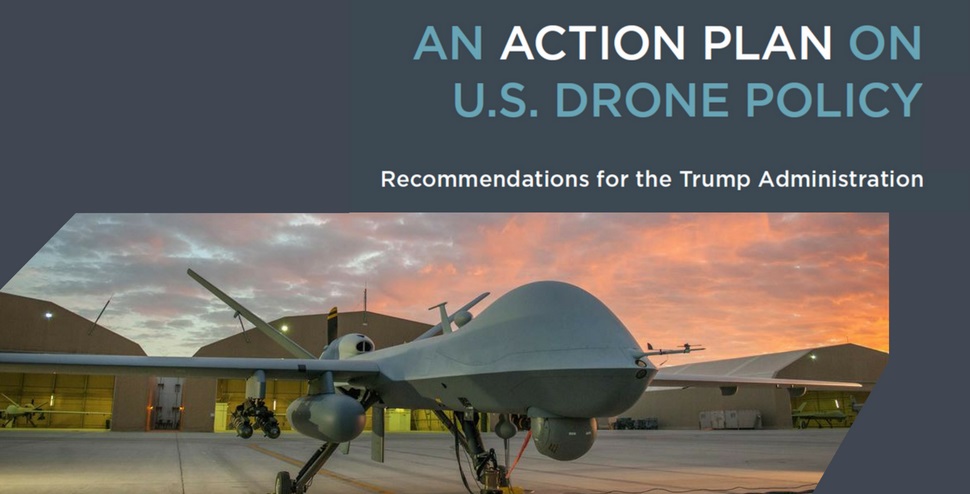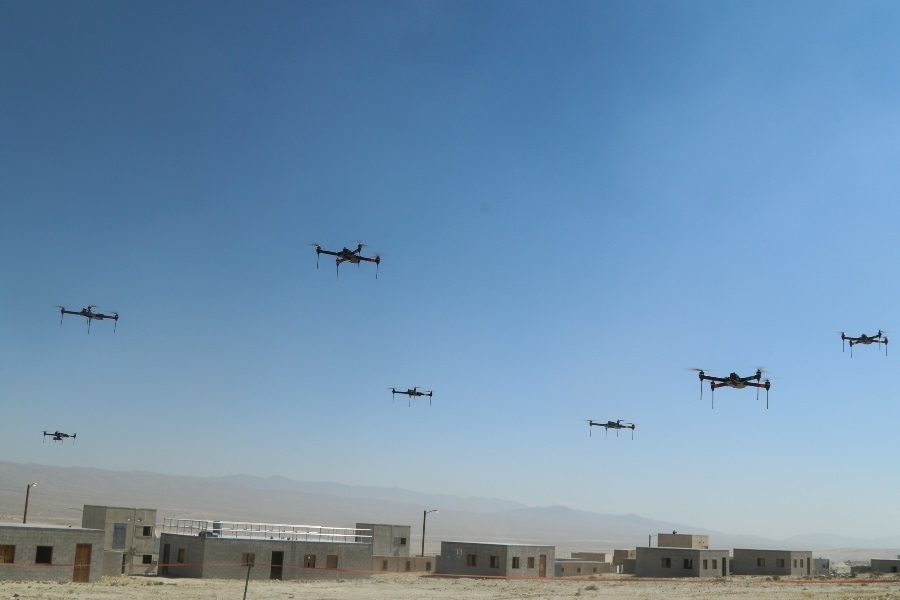 Pic.: The Stimson Center
Pic.: The Stimson Center
The US military’s plan to deploy thousands of drones in preparation for a potential conflict with China is behind schedule, and the work has been shifted to a new organization to accelerate the timeline, ‘The Wall Street Journal’ quoted informed sources as saying in a report.
The US Department of Defense’s goal to field thousands of artificial intelligence (AI) drones to the Indo-Pacific region by last month has fallen short, the newspaper reported.
The Pentagon’s program has faced challenges that have slowed its timeline, including unreliable weapons, the report said.
The program was proposed by former US deputy secretary of defense Kathleen Hicks during the administration of former US president Joe Biden.
It aimed to buy large numbers of small, smart and affordable AI weapons for land, air and sea combat that would enable autonomous warfare, lowing costs and personal risks.
In the case of a conflict in the Taiwan Strait, which US analysts predict could happen as early as 2027, these autonomous weapons would enable the US military to efficiently operate across the Pacific.
However, the program has faced challenges that have slowed its timeline, including unreliable weapons that have proven too costly or slow to produce, preventing the Pentagon from buying the large numbers required.
During a drill last month in California, many of the program’s technologies did not meet expectations.
For example, an uncrewed boat developed by BlackSea Technologies went adrift after a steering failure, an aerial drone made by Anduril Industries had a delayed launch due to a technical issue, and the software on several uncrewed boats failed to correctly identify targets.
In addition, BlackSea’s global autonomous reconnaissance craft that were not designed for long-range missions in the Pacific were bought before officials fully understood their limits, which resulted in high costs and delays.
People involved in the project said it laid the foundation for the US military to procure large-scale autonomous systems, while Hicks said the program was on track when she left office in January.
A defense official said the Replicator Program is now overseen by US Special Operations Command Vice Commander Francis Donovan, who saw many of the problems firsthand when he took charge last month.
 A swarm of 40 drones flying at a National Training Center in Fort Irwin, CA.
A swarm of 40 drones flying at a National Training Center in Fort Irwin, CA.
Photo: 11th Armored Cavalry Regiment
The US’s Replicator project, billed as a way to swarm China with “small, smart, cheap” drones, has been grounded by delays, spiraling costs and software chaos, raising questions about the Pacific balance of power in a fast-moving new era of drone warfare, ‘Asia Times’ writes.
Conceived by then-Deputy Defense Secretary Kathleen Hicks with US$1 billion in initial funding, the Replicator was intended to provide “small, smart, cheap” drone systems to counter China’s growing military power and prepare for a potential conflict over Taiwan as early as 2027.
However, unreliable hardware, slow or costly production and software failures in coordinating drones from different manufacturers have plagued the effort. Tests revealed problems ranging from rudder failures on unmanned boats to misidentification of objects and communication vulnerabilities in Switchblade 600 drones, which also faced criticism for high costs and poor battlefield performance in Ukraine.
US drone performance in the Russia-Ukraine war may have been less than stellar – possibly failing to justify their cost. Newsweek reported in April 2024 that Ukraine’s drone strategy has pivoted away from US drones due to prohibitive costs and poor battlefield performance against Russian electronic warfare.
A US Switchblade 300 anti-tank loitering munition costs $90,000 per unit, in contrast to some commercial models repurposed by Ukraine that cost just $700. Furthermore, Jack Watling and Nick Reynolds mention in a May 2023 Royal United Services Institute (RUSI) report that Ukraine is losing 10,000 drones a month, mainly to Russian jamming.
According to Newsweek, US drones are glitch-prone and challenging to repair, and have proven less effective than cheaper Chinese models, which Ukraine now sources in the tens of thousands per month. Despite initial US support, Ukraine is increasingly relying on domestic drones, which prioritize affordability and operational simplicity, the report said.
While acknowledging these challenges, the US DoD continues to refine its drone capabilities. However, the Newsweek report cites experts stating that while US drones remain technologically superior, they are ill-suited to Ukraine’s fast-paced combat needs.
Bryan Clark of the Hudson Institute (HI) warned that Replicator risks aiming at the wrong problem, noting that trying to match China’s mass with mass is flawed. Instead, he argues the program should prioritize enabling operational innovation backed by robust analytic processes and cross-domain integration of unmanned systems – areas where the US DoD has historically struggled.
Sam Tangredi argues in a March 2024 Proceedings article that the Replicator program’s focus on mass-producing cheap autonomous drones is strategically flawed for countering China’s high-tech military.
Tangredi points out that small drones lack the range, payload and lethality required for Pacific warfare, and should thus function primarily as intelligence, surveillance and reconnaissance (ISR) tools rather than decisive weapons.
Tangredi says their tactical utility in Ukraine does not translate to the vast Indo-Pacific theater.
read more in our Telegram-channel https://t.me/The_International_Affairs

 10:52 03.10.2025 •
10:52 03.10.2025 •






















